
Clinical and Experimental Emergency Medicine
Scope & Guideline
Advancing emergency care through innovative research.
Introduction
Aims and Scopes
- Emergency Care Practices:
The journal emphasizes research and reviews related to best practices in emergency care, including innovative treatment protocols, pain management strategies, and procedural techniques in emergency settings. - Clinical Outcomes and Prognosis:
A significant focus is placed on studies that investigate clinical outcomes, prognostic factors, and the efficacy of various interventions in emergency medicine, aiming to improve patient survival and recovery rates. - Technological Advancements:
The journal explores the integration of new technologies in emergency medicine, such as point-of-care ultrasound, artificial intelligence, and telemedicine, highlighting their impact on diagnosis and treatment. - Public Health and Epidemiology:
Research on public health trends, epidemiological studies, and the impact of external factors (like pandemics) on emergency department utilization and patient outcomes is a core area of focus. - Education and Training:
The journal addresses the importance of education and training in emergency medicine, including simulation training, competency assessments, and the development of guidelines for emergency medical professionals.
Trending and Emerging
- Point-of-Care Ultrasound:
There is a significant increase in research related to point-of-care ultrasound, emphasizing its role in rapid diagnosis and management in emergency settings, improving patient outcomes and procedural efficiency. - Artificial Intelligence and Machine Learning:
Emerging studies focus on the application of artificial intelligence and machine learning in predicting patient outcomes, enhancing diagnostic accuracy, and optimizing emergency care workflows. - Impact of COVID-19 on Emergency Medicine:
Research examining the repercussions of the COVID-19 pandemic on emergency department operations, patient demographics, and treatment strategies has surged, highlighting the need for adaptive practices in crisis situations. - Mental Health in Emergency Care:
There is a growing emphasis on the recognition and management of mental health issues in emergency settings, reflecting an increased awareness of the psychological aspects of patient care. - Telemedicine and Remote Care:
The rise of telemedicine as a viable option for patient assessment and follow-up in emergency medicine is increasingly featured, showcasing its relevance in enhancing access to care and maintaining continuity during health crises.
Declining or Waning
- Traditional Pharmacological Interventions:
Research centered on traditional pharmacological treatments for common emergency conditions appears to be decreasing, possibly overshadowed by more innovative approaches and technologies. - Invasive Procedures Without Technological Support:
There is a noticeable decline in studies related to traditional invasive procedures that do not incorporate technological advancements, as the focus shifts towards minimally invasive techniques and enhanced imaging. - Historical Case Reports:
The publication of historical case reports has waned, indicating a potential shift towards more comprehensive studies or clinical trials that provide broader insights rather than individual cases. - Non-Critical Care Topics:
Research focusing on non-critical care issues or less acute conditions within the emergency department is becoming less frequent, suggesting a tighter focus on life-threatening and urgent care scenarios. - Basic Life Support Guidelines:
With the establishment of comprehensive guidelines, there seems to be a reduction in original research specifically focused on basic life support protocols, as these have become standardized.
Similar Journals
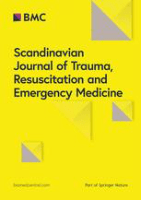
Scandinavian Journal of Trauma Resuscitation & Emergency Medicine
Unlocking New Frontiers in Critical Care and ResuscitationThe Scandinavian Journal of Trauma Resuscitation & Emergency Medicine, published by BMC, stands as a leading open-access platform dedicated to advancing the fields of trauma, resuscitation, and emergency medicine since its inception in 2008. With an ISSN of 1757-7241 and an impressive track record, this journal has established itself in the top quartile of critical care and emergency medicine, achieving Q1 rankings in both categories for 2023. Its Scopus rankings further underscore its importance, placing it among the top 11 journals in emergency medicine and the 23rd in critical care and intensive care medicine, signaling a strong impact within the academic community. As we converge toward 2024, the journal continues to provide researchers, clinicians, and students with valuable access to cutting-edge research and developments in the sector, contributing significantly to knowledge, practice, and policy in emergency care. Located in the heart of the United Kingdom, the journal remains dedicated to its mission of fostering innovation and dissemination of high-quality research, ensuring that vital medical advancements reach those who need them most.

Journal of the American College of Emergency Physicians Open
Leading the Charge in Emergency Medicine AdvancementsJournal of the American College of Emergency Physicians Open is a prominent Open Access journal published by WILEY that has been committed to advancing the field of emergency medicine since its inception in 2020. As a vital resource for researchers, clinicians, and students, this journal aims to disseminate innovative research findings, clinical guidelines, and educational resources that support the rapidly evolving landscape of emergency care. With a solid Q1 ranking in the emergency medicine category and positioned within the top 25 ranks of Scopus’ emergency medicine listings, the journal ensures high visibility and accessibility for critical research. As an open-access publication, it provides unrestricted access to its content, facilitating knowledge sharing and collaboration among professionals globally. The journal's significant impact on the field is reflected in its growing influence, underlining its relevance as an essential platform for advancing emergency medicine practice and research.
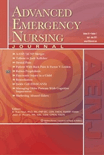
Advanced Emergency Nursing Journal
Empowering Professionals to Advance Patient CareAdvanced Emergency Nursing Journal, published by Lippincott Williams & Wilkins, stands as a key resource within the domains of Emergency Medicine and Emergency Nursing. With a commitment to advancing the field, this journal provides a platform for rigorous research, critical reviews, and innovative practices aimed at enhancing patient care in emergency settings. Though it holds a Q3 ranking in both related categories as per the 2023 metrics, its global reach spans various aspects of emergency care, promising insights that are crucial for both professionals and academics alike. Covering topics from clinical procedures to policy analysis, the journal invites submissions that aim to bridge theory and practice, highlighting the importance of evidence-based approaches in emergency nursing. Researchers, educators, and healthcare practitioners can Find more information and explore their own contributions in a dynamic environment that continuously evolves with the field. Whether you're seeking to stay current with the latest advancements or to publish your findings, this journal is an essential asset for those dedicated to improving care in urgent medical situations.

Internal and Emergency Medicine
Shaping the Future of Healthcare Through ResearchInternal and Emergency Medicine is a highly regarded academic journal published by Springer-Verlag Italia SRL, dedicated to advancing the fields of emergency medicine and internal medicine. With an impressive Q1 ranking in Emergency Medicine and a Q2 ranking in Internal Medicine as of 2023, the journal serves as a vital platform for researchers and professionals alike seeking to disseminate pioneering findings and innovative practices. Established in 2006 and operational until 2024, the journal focuses on the intersection of these critical medical domains, providing insight into urgent clinical challenges and everyday internal medicine cases. Although currently not open access, it offers subscription options for readers aiming to deepen their knowledge in these essential areas of healthcare. The journal’s contributions are instrumental in shaping medical protocols and enriching the education of students and practitioners globally, all while based in the heart of Italy, specifically Milan.
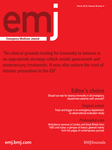
EMERGENCY MEDICINE JOURNAL
Empowering Emergency Care Through Cutting-Edge ResearchEmergency Medicine Journal, published by BMJ Publishing Group in the United Kingdom, stands as a preeminent resource within the realm of emergency and critical care medicine. ISSN 1472-0205 and E-ISSN 1472-0213 reflect its commitment to accessible research, emphasizing open access options to enhance the dissemination of vital medical insights. The journal boasts an impressive categorization, achieving a Q1 ranking in Critical Care and Intensive Care Medicine, Emergency Medicine, and miscellaneous Medicine in 2023. With a focus on high-quality peer-reviewed articles, it serves as an essential platform for sharing innovative research and evidence-based practices that enhance patient care in emergency settings. Ranking 23rd in Emergency Medicine, with a commendable 79th percentile in Scopus rankings, it underscores its position as a leading journal among peers, making it indispensable reading for researchers, professionals, and students alike who seek to stay abreast of evolving trends and practices in emergency medicine and critical care.

Notfall & Rettungsmedizin
Elevating the standards of emergency care research.Notfall & Rettungsmedizin is a leading journal in the field of Emergency Medicine, published by Springer in Germany. With a focus on advancing the science and practice of emergency care, this journal offers a platform for original research, critical reviews, and case studies that address the latest challenges and innovations in the field. The journal ranks in the Q2 category of Emergency Medicine for 2023, reflecting its commitment to high-quality scholarship and impactful research, evidenced by its Scopus ranking of #51 out of 109, placing it within the 53rd percentile. Although it does not provide open access, the content is invaluable for researchers, healthcare professionals, and students engaged in emergency medicine. From its inception in 1999 to its continuous publication through 2024, Notfall & Rettungsmedizin remains a vital resource for disseminating knowledge and fostering professional development in emergency care worldwide.
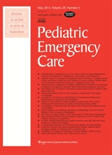
PEDIATRIC EMERGENCY CARE
Empowering Excellence in Pediatric Emergency CarePediatric Emergency Care, published by Lippincott Williams & Wilkins, serves as a vital resource within the fields of Emergency Medicine, Pediatrics, and Child Health. Established in 1985, this journal offers a platform for the dissemination of impactful research, offering critical insights for healthcare professionals dedicated to improving emergency care for children. With an impressive impact factor, it ranks in the Q2 category in Emergency Medicine and Pediatrics, highlighting its significance in advancing clinical practices and outcomes. Although not an open-access journal, it provides extensive access options to ensure the research is available to a broad spectrum of readers. The journal's rigorous standards and commitment to excellence make it an essential tool for researchers, practitioners, and students aiming to stay at the forefront of pediatric emergency care advancements.

Open Access Emergency Medicine
Fostering innovation in emergency medicine and nursing.Open Access Emergency Medicine, published by DOVE MEDICAL PRESS LTD, is a premier journal dedicated to the dynamic fields of Emergency Medicine and Emergency Nursing. With its ISSN 1179-1500, this journal has established a notable presence since its inception as an Open Access platform in 2010, offering unrestricted access to high-quality research and innovative practices in the area. As one of the leading journals in its field, it holds a respectable Q2 ranking in both Emergency Medicine and Emergency Nursing categories as of 2023, reflecting its commitment to advancing knowledge and fostering impactful research. The journal is indexed in prestigious databases with solid Scopus rankings, placing it in the 65th percentile for Emergency Medicine and the 64th percentile for Emergency Nursing, ensuring that contributions reach a diverse audience of researchers, practitioners, and students worldwide. With its focus on contemporary issues, this journal serves as an essential resource for the continual growth and development of emergency health services.
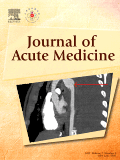
Journal of Acute Medicine
Transforming acute care with impactful research findings.Journal of Acute Medicine is a pivotal platform for disseminating cutting-edge research within the fields of Critical Care and Intensive Care Medicine and Emergency Medicine. Published by the Taiwan Society of Emergency Medicine in the Netherlands, this journal serves as a vital resource for healthcare professionals and researchers devoted to advancing acute medical practice. With an ISSN of 2211-5587 and an E-ISSN of 2211-5595, the journal features a collection of high-quality articles that focus on the latest developments and challenges facing emergency healthcare systems. Since its inception in 2011, the journal has achieved a respectable Q3 ranking in both critical care and emergency medicine categories, demonstrating its commitment to scholarly excellence. Although it currently does not operate as an open-access publication, the journal provides a critical forum for exchanging knowledge, fostering collaborations, and enhancing clinical practices, ensuring that it remains an essential read for those involved in acute medical care.

Current Emergency and Hospital Medicine Reports
Empowering Practitioners with Cutting-Edge ResearchCurrent Emergency and Hospital Medicine Reports, published by Springer, is a pivotal journal in the field of emergency and hospital medicine. With a commitment to disseminating crucial research and advancements, this journal serves as a platform for sharing high-quality studies that enhance clinical practices and improve patient outcomes. As an important resource for researchers, healthcare professionals, and students, it caters to the growing need for evidence-based knowledge in emergency medicine. Although currently not classified as open access, the journal offers a wealth of information that aligns with the latest innovations and practices in the discipline. By engaging with diverse topics, from clinical interventions to hospital management strategies, it aims to inform and inspire the next generation of practitioners and scholars in this vital field of medicine. With its ISSN of 2167-4884, Current Emergency and Hospital Medicine Reports is dedicated to advancing the frontiers of emergency healthcare through rigorous research and illuminating insights.